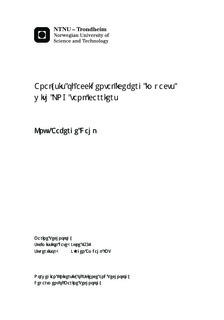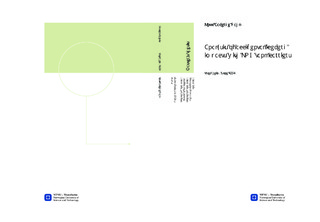| dc.description.abstract | The number of collisions between ships and icebergs are increasing in correlation with the increase of the number of ships sailing in Arctic areas. Due to the exploitation of gas fields in Arctic areas, the LNG shipping in these areas is expected to increase. The consequences of an iceberg impact can be critical for ship structure, the crew and the cargo, and it is important to be able to predict the result of such a scenario.Different relevant impact scenarios have been discussed, and it has been concluded that the most critical scenario for a spherical type LNG carrier is an impact at the bow shoulder where the distance between the outer hull and the cargo tanks is at its shortest. Based on this study, a bow shoulder impact has been chosen as the scenario investigated in the thesis.To investigate the influence of the surrounding water, an ALE-model representing this was therefore supposed to be modelled in LS-DYNA. After several unsuccessful tests this work was postponed to further work, but a detailed description of the ALE-modelling and the different options tested has been carried out.A detailed FE model of the bow shoulder section of an ice strengthened spherical type LNG carrier has been carried out. The mesh in this section has been modelled sufficiently fine to capture the governing deformation mechanisms and the total number of elements in the model are therefore large. This will lead to increased computation time, but this is acceptable based on the accuracy of the results obtained. In addition to the local bow shoulder model, a FE model of a global 125 000 dwt. LNG tanker has been established. The outer shell and coarse geometry has been provided by Ph.D. candidate Martin Storheim, and the detailed bow shoulder model has been included in this global model. The global model is meshed with large rectangular four-node elements, and transitions to the detailed model have been created. Properties have been added to the global model in terms of getting a model which represents the real ship to the best extent possible.The steel material model used is developed by Hagbart Alsos and includes a RTCL fracture criterion. The ice material model is developed by Zhenhui Liu and is modelled to represent a physical approach to the crushing of the ice. The aluminium material is based on studies performed by Moss Maritime and simple power law calculations.The added mass and weight of the LNG cargo has been included as increased density in the outer hull below the water line and in the tank shells respectively. The aim of the simulations has been to investigate similarities and differences in different collision approaches. Three different approaches have therefore been simulated for two different impact angles. For the local model, two simplified approaches have been simulated: A prescribed displacement has been applied to the iceberg. This is the most common approach in collision simulations due to lower requirements to computer performance. An initial velocity has been given to the iceberg. This approach requires more computer resources, but will probably yield less conservative results.Pinned boundary conditions have been applied to the bow shoulder model for all the local analyses. In addition to the local analyses, a full global analysis has been performed for the two different impact angles. In these simulations no boundary conditions have been applied to any of the colliding bodies, and initial velocity is given to the ship structure. The mass of the iceberg is approximately 2500 tons and for the global analyses no velocity of the iceberg has been assumed.The results obtained from these simulations have shown that both of the local simulations tends to over-estimate the indentations. The prescribed displacement analyses yields over-conservative results for long duration simulations, but at large impact angles the results obtained are reasonable for longer simulated time than for small impact angles. The initial velocity method yields more reasonable results, and this approach is therefore better to apply when the damage from a collision scenario is estimated by simplified methods.To investigate the effect of the iceberg size, two simulations including an iceberg of approximately 19 000 tons have been carried out. These simulations have shown that the damage in such collision is significantly larger than for the small iceberg. It has also been seen that there is less difference between the simplified approach and the full analysis for the large iceberg than for the small iceberg approaches. This is remarkable, since the boundary conditions have been assumed to give larger contribution to the result for the large iceberg.Unreasonable large accelerations have been found in collision simulations described in different papers. To investigate this in the simulations performed in this thesis, the accelerations and motions have been observed in different spots which is not directly impacted by the collision. No extreme values of either accelerations or motions have been found, and it is concluded that this is not a problem for the collision scenario simulated in this thesis. | nb_NO |

